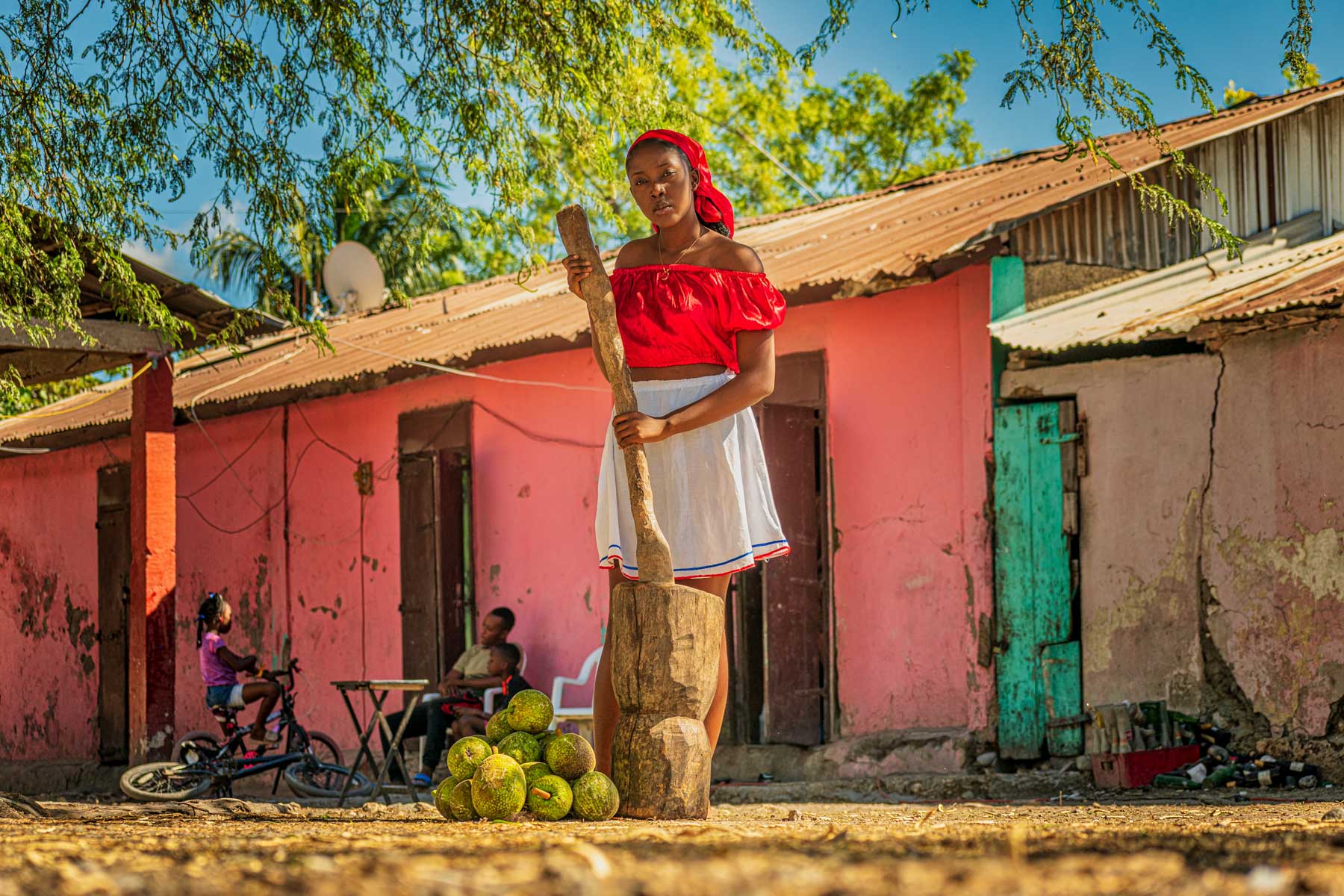
Photo: Jean Oscar Augustin
Haitian Cuisine: A Culinary Map of Haiti
“A map of Haiti cannot be drawn with just hills and valleys, mountains and beaches…each department has its own culinary speciality”
A culinary map of Haitian food
Come with us on a lip-smacking journey around one of the greatest little countries in the Caribbean as we map out the most recognizable landmarks of manje peyi – “country food”, or Haitian cuisine.
Famous for its Caribbean climate, thriving art scene and positive outlook, this little country is certainly not being let down by its food culture. Created by centuries of cultural syncretism, Haitian creole cuisine is a blend of native Caribbean, African and French Colonial cooking styles, with a spicy dash of Spanish influence from the east of the island (and thanks to how well habanero peppers grow here!).
Many “classic” Haitian recipes crystallized early on in Haiti’s republican history, and have survived the test of time, but Haitians pride themselves on innovation, and Haitian food is no exception.
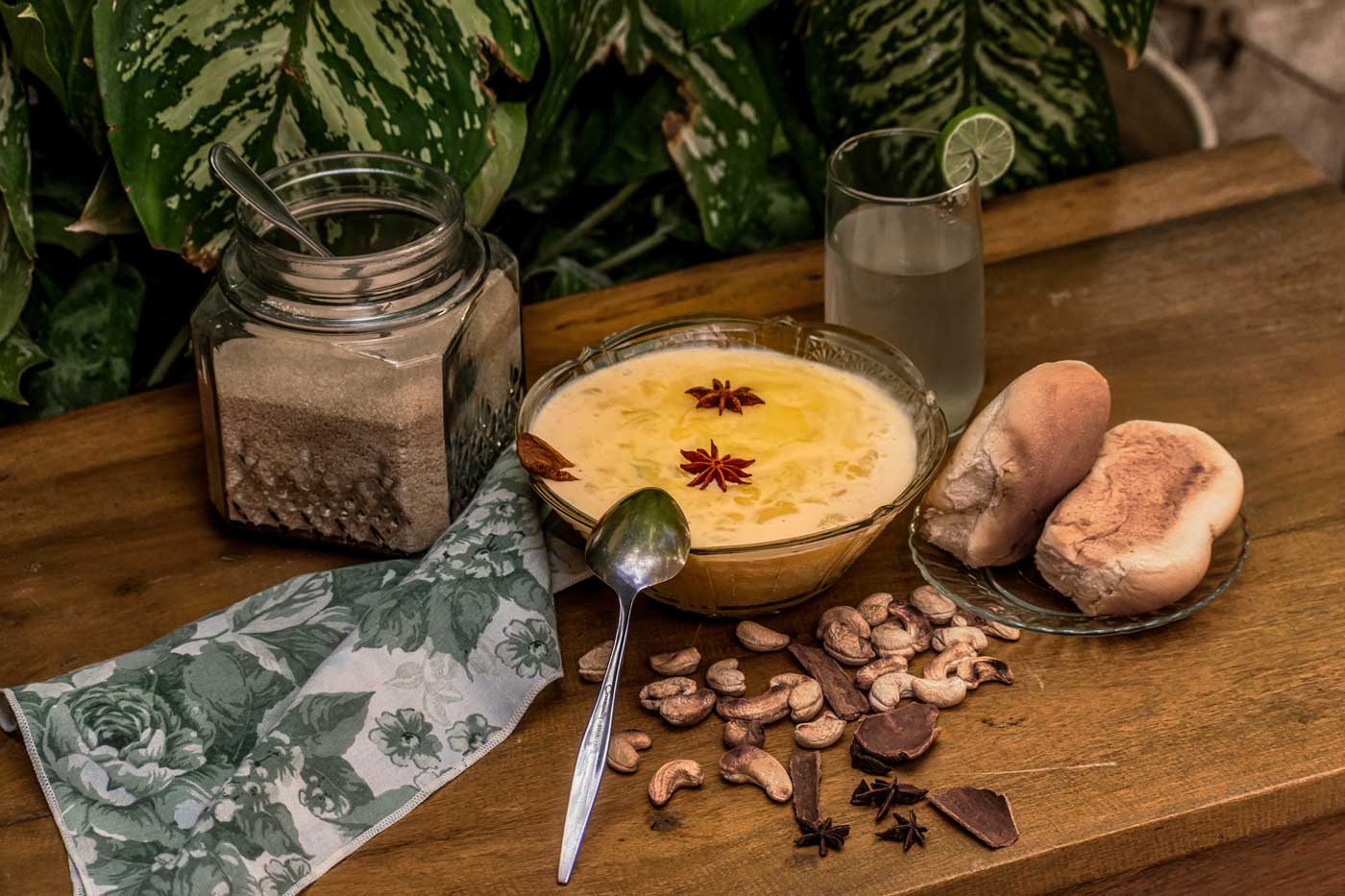
Photo: Jean Oscar Augustin
Start at the beginning
Breakfast in Haiti begins with akasan, a thick, corn-based porridge served with sugar, cinnamon, and coconut milk. Over the years, ingredients like cow’s milk as well as vanilla and almond extracts have been introduced to it, too. The name akasan is part of the language heritage left to us by the indigenous inhabitants of Hispaniola – specifically a tribe called the Arawak, who made up the majority on the island at the time of Hispaniola’s colonization.
The Arawak also left us with the recipe for kasav. Comparable to a galette, kasav is made of cassava, and usually enjoyed with either peanut butter or avocado. Some people innovate and eat their kasav with an omelet or with cheese.
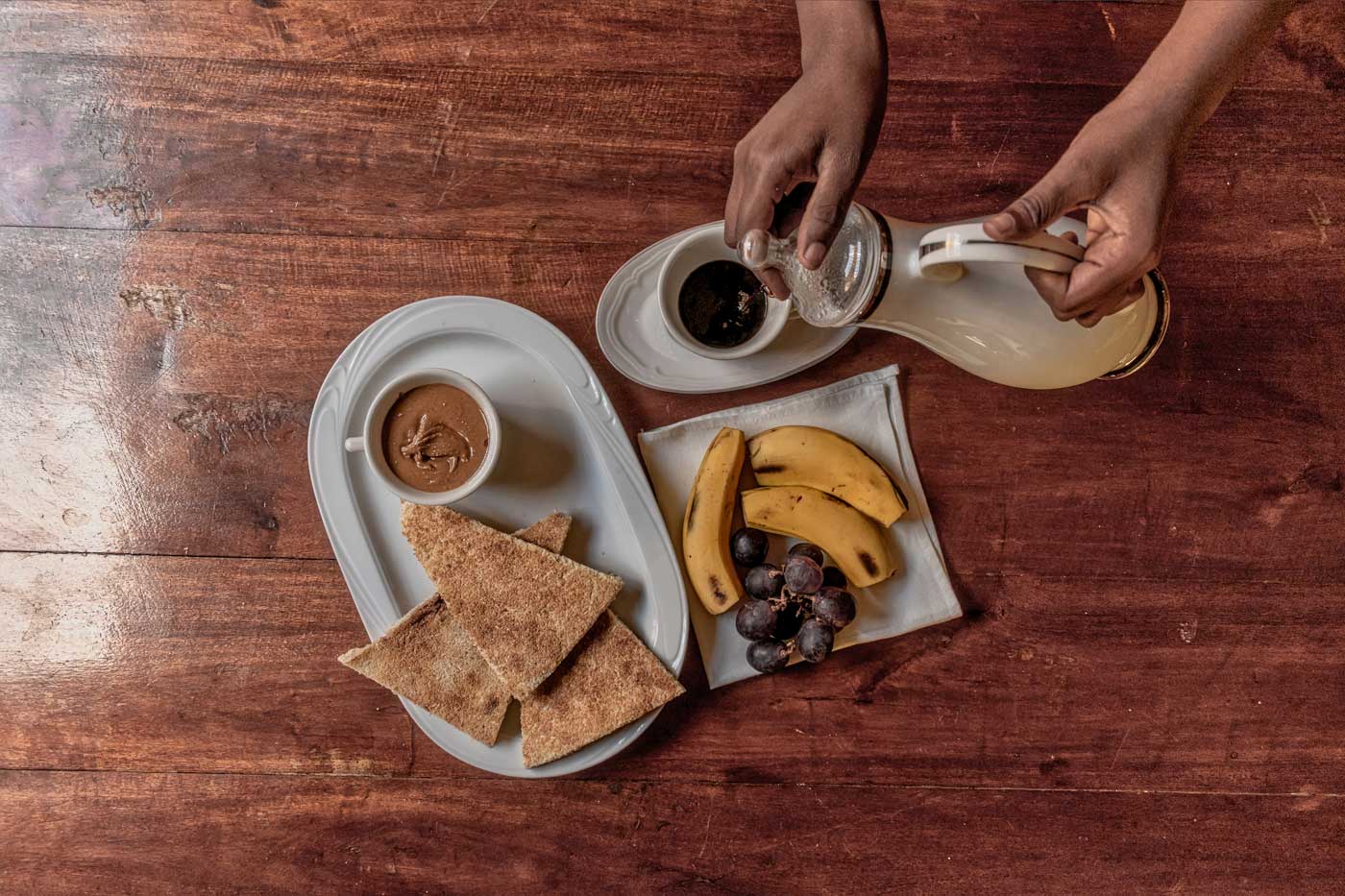
Photo: Jean Oscar Augustin
Today, each department has its own culinary specialty. Coastal cities like Jacmel, Les Cayes and Port-Salut are well known for dishes featuring fresh fish – fried, boiled, grilled, or in a sauce, alongside rice, plantains, or other root vegetables like yam, taro, or sweet potatoes.
Grand’Anse
The department of Grand’Anse, whose capital is Jérémie, is famous for its tonmtonm; a dish originally from Africa, imported to the Caribbean via the slave trade. Tonmtonm is a preparation of pounded breadfruit served with a gonbo sauce — made with okra — usually eaten with the hands. Tradition dictates that the tonmtonm be swallowed without chewing to really appreciate all its flavors.
Grand’Anse is also the home of konparèt: thick, hearty, sweet biscuits made with flour, sugar, and milk, with delicious flavors. It can be eaten as an appetizer, but be careful not to overdo it; it is quite filling.
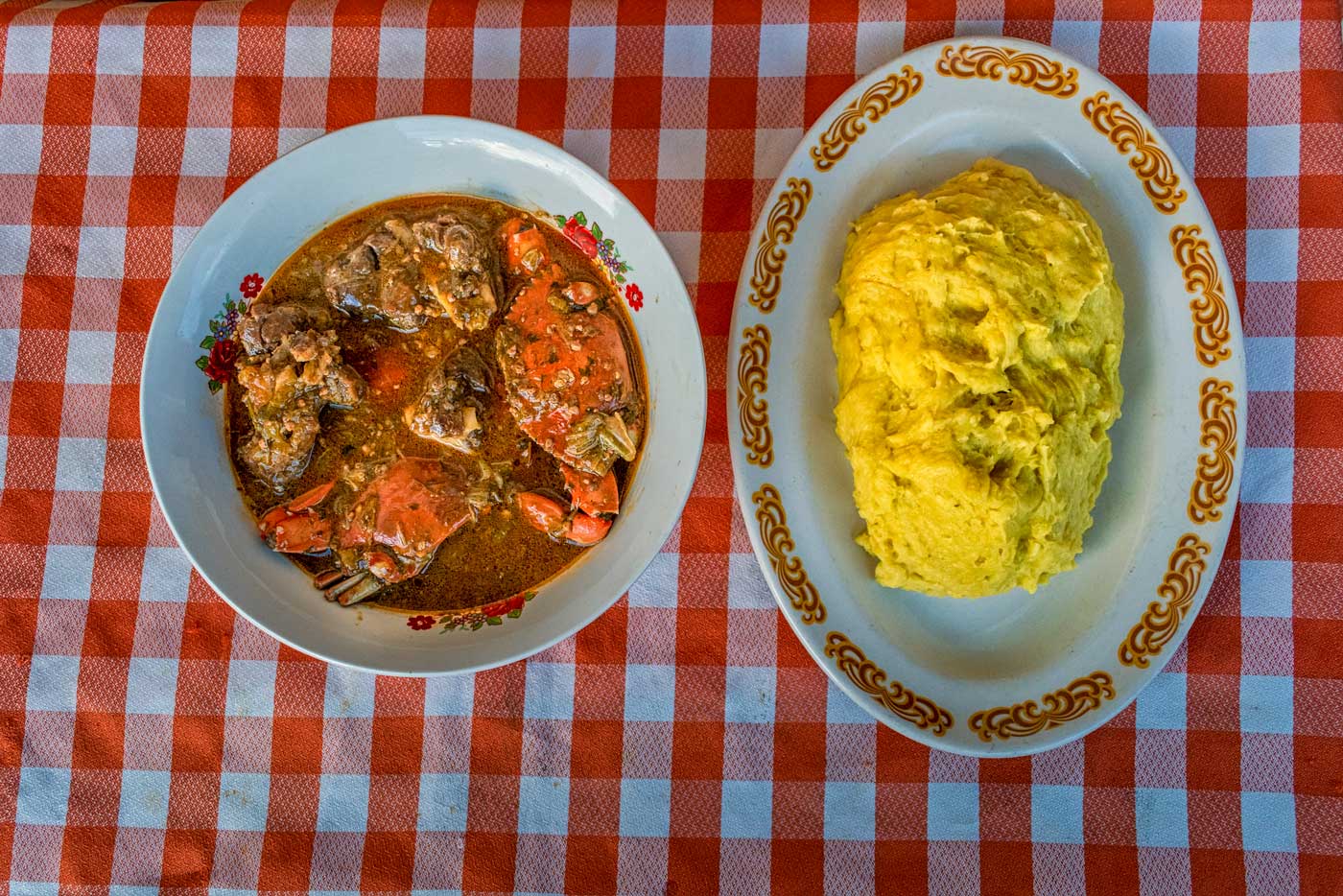
Photo: Jean Oscar Augustin
Ouest
The city of Petit-Goâve is noted for its dous makòs; a very sweet milk-based fudge that melts slowly on the tongue. If you stop by Petit-Goâve, a good size piece of dous makòs will make for a great dessert after a plate of freshly-cooked seafood.
Nord
On the other side of the island, up north, everyone agrees that the city of Cap-Haïtien is well-furnished in talented cooks. Hoping to capitalise on this reputation, new restaurants pop up in the city fairly often, meaning there’s always something new to try (and new entrepreneurs to support) for return visitors.
Cap-Haitien cuisine is particularly well-known for its cashew-based recipes, so be sure to try some local cashew dishes while you’re in town! Native to Brazil, cashew trees are now an important crop across the Caribbean, and most of Haiti’s are grown right here in the North Department.
Artibonite
Artibonite, just southwest of the Nord department, is Haiti’s HQ for rice and lalo, a stew originating in Africa. Also called Egyptian spinach and West African sorrel, lalo is the local name for jute. In the US and Europe, jute might be better known as a source of rope fibre, but here in Haiti (and across most of Africa and Asia) this multitalented plant is more widely used in cooking.
To make lalo, fresh, bright jute leaves are picked off of the plant and stewed with spinach, onions, peppers, and garlic as well as creole-seasoned cuts of fish or meat. Setting itself apart from lalo dishes available throughout the Artibonite province – and making it especially worth stopping to try – lalo in Montrouis is made with freshly caught sea crabs.
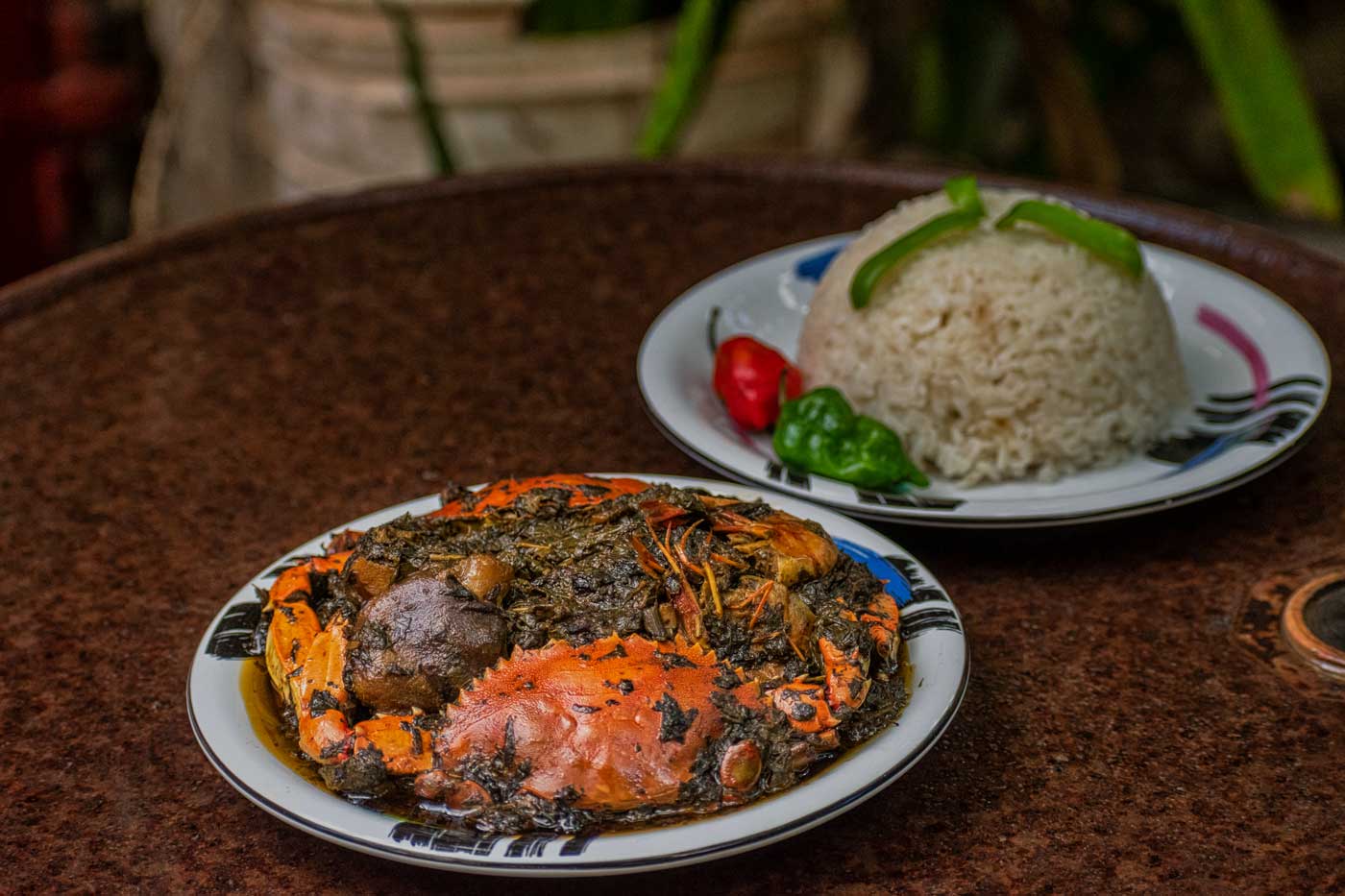
Photo: Jean Oscar Augustin
And wherever you go, you’ll find…
Sweet potatoes and corn.
Sweet potatoes feature in several classic Haitian recipes, such as patat ak lèt (potato with milk), made by boiling the potato first, peeling it, then pouring sweet milk onto it, with just a touch of salt, to bring out its natural flavors.
Corn is eaten all over the country as part of many meals. In its most basic form, this staple appears as hot, creamy polenta — called mayi moulen in Haiti. Corn can also be boiled (what a pleasure it is to bite into a juicy corn cob, flavored with the sauce it was boiled in!). It’s the main ingredient in konsonmen, a stew of corn, rice, beans, and other delicious ingredients. Corn also features in tchaka; a thick and rich stew featuring corn, meat (lots of meat) mixed with vegetables and bean purée. You’ll also find corn smoked, and in pèt-pèt. Pèt-pèt is actually just popcorn, but we have to mention this because its Haitian name is just such a joy to say!
Take a culinary trip around Haiti!
A map of Haiti cannot be drawn with just hills and valleys, mountains and beach fronts. Instead of relying solely on a physical itinerary, how about using your current — or next trip — as a way to get to know Haiti through its different flavors? Bold, but always balanced, Haitian cuisine is as varied and nuanced as the people of the island.
Written by Melissa Beralus and translated by Kelly Paulemon.
Published January 2022
Explore Haiti’s Art & Culture

Paradise for your inbox
Your monthly ticket to Haiti awaits! Get first-hand travel tips, the latest news, and inspiring stories delivered straight to your inbox—no spam, just paradise.




